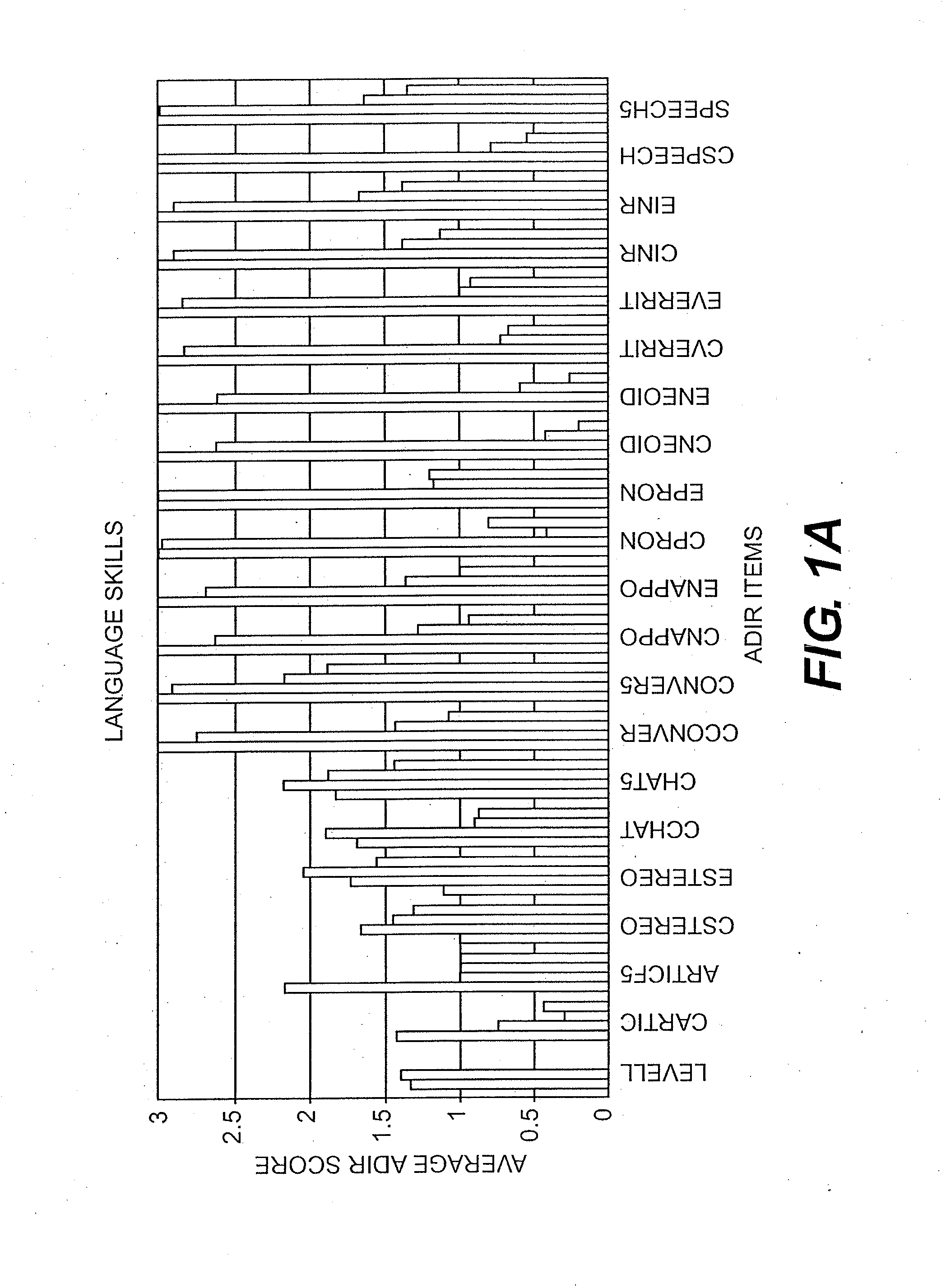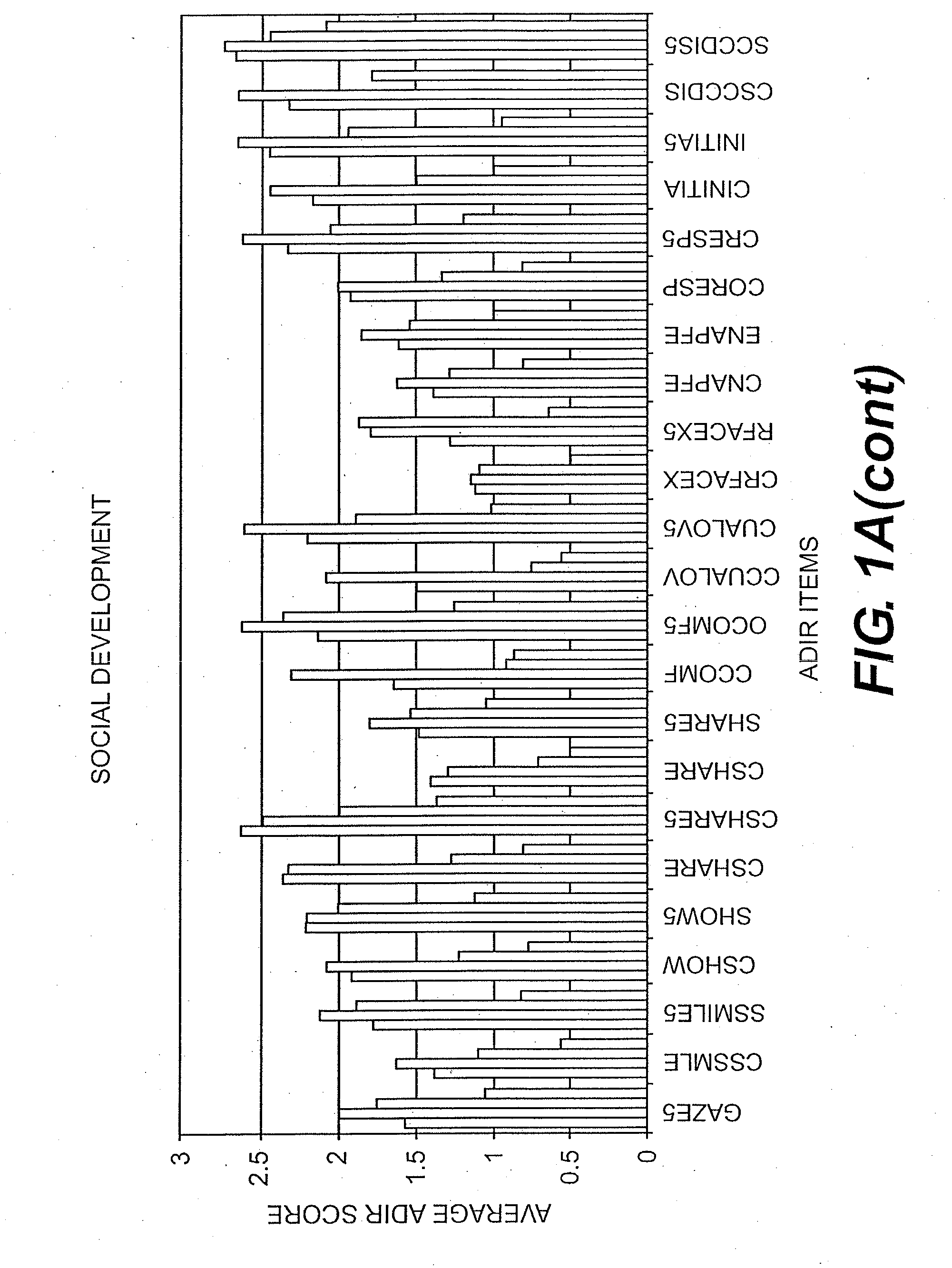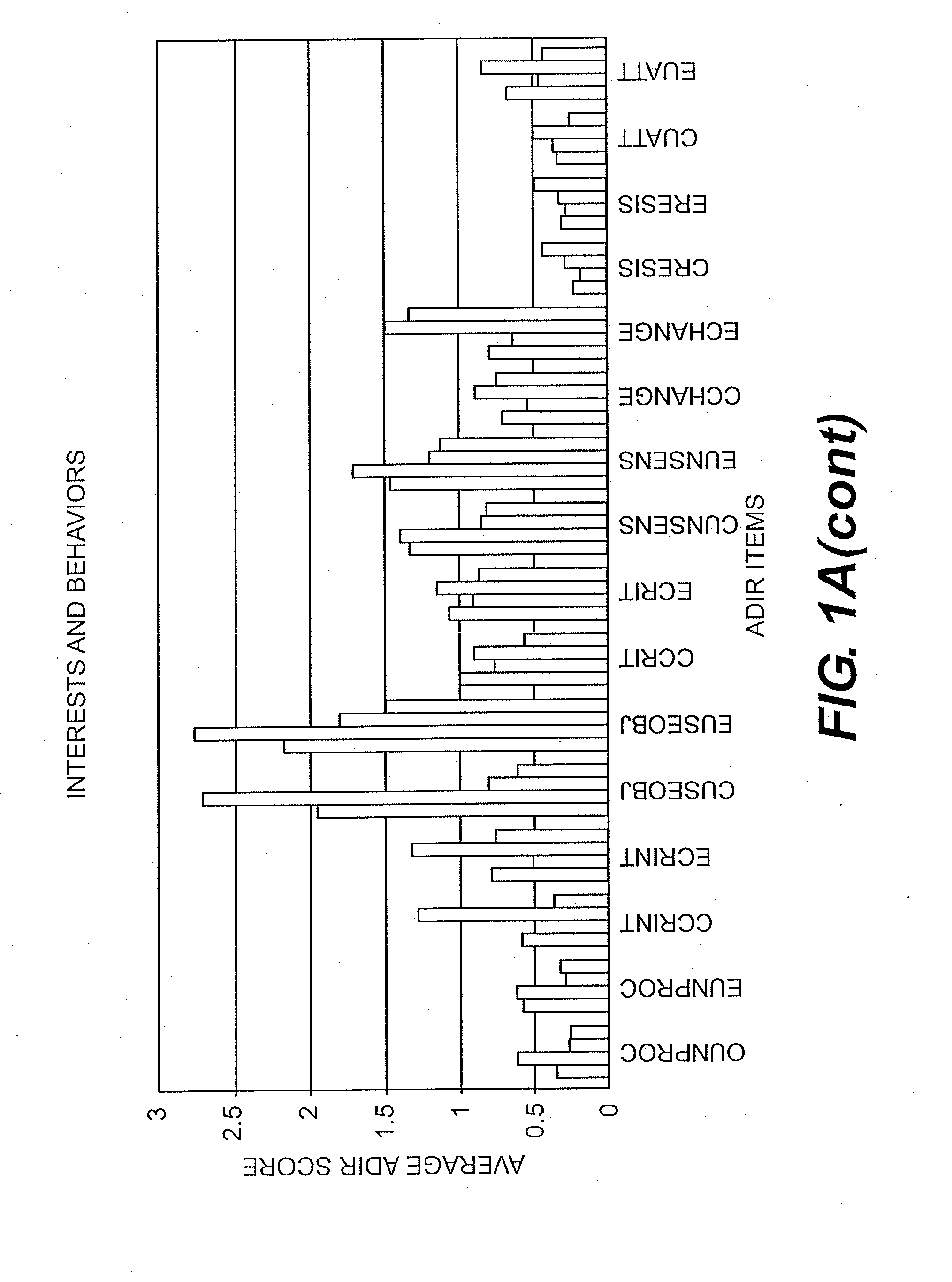Compositions and Methods for Identifying Autism Spectrum Disorders
a technology of autism spectrum disorder and composition, applied in the field of dna microarray technology, can solve the problems of inability to replicate the finding of another group, the specific genes involved in each locus have not been determined to date, etc., and achieve the effects of increasing expression, decreasing expression, and increasing the production of androgens
- Summary
- Abstract
- Description
- Claims
- Application Information
AI Technical Summary
Problems solved by technology
Method used
Image
Examples
example 1
Novel Clustering of Items from the Autism Diagnostic Interview-Revised Identifies Phenotypes that are Associated with Distinct Gene Expression Profiles
[0177]This Example demonstrates the use of multiple clustering methods applied to a broad range of ADIR items from a large population (1954 individuals) to identify subgroups of autistic individuals with clinically relevant behavioral phenotypes. Data from large-scale gene expression analyses on lymphoblastoid cell lines derived from individuals who fall within 3 of these subgroups which are reported in the accompanying manuscript show distinct differences in gene expression profiles that in part relate to the severity of the phenotype. Functional and pathway analyses of gene expression profiles associated with the phenotypic subgroups also suggest distinct differences in the biological phenotypes that associate with these subgroups. Based on these analyses, the data suggests that multivariate analysis of the ADIR data using a broad s...
example 2
Gene Expression Profiling Differentiates Autism Case-Controls and Phenotypes of ASD
Evidence for Circadian Rhythm Dysfunction in Severe Autism
[0191]As described in EXAMPLE 1 supra, several clustering algorithms were applied to data from the Autism Diagnostic Interview-Revised (ADIR) questionnaires in an attempt to divide nearly 2000 autistic individuals into phenotypic subgroups based upon severity across 123 ADIR items. This approach differs significantly from that employed by other investigators in that the subgroups are defined by multiple items within different behavioral or functional categories, including spoken language, nonverbal communication, social skills, play skills, physical attributes and sensitivities, aggression, and savant skills, while many other studies utilize at most several item scores within a single category to define subgroups of individuals. Another aspect of the approach that differs from previous analyses is that the method employs multiple clustering alg...
example 3
Gene Expression Profiling of Lymphoblastoid Cell Lines from Autistic and Nonaffected Sib Pairs Reveals Altered Signaling and Metabolic Pathways Relevant to Development and Steroid Biosynthesis
[0214]In this Example, the gene expression profiles of LCL derived from 21 sib pairs where one of the siblings is autistic and the other is not were analyzed. To reduce the phenotypic heterogeneity among the samples, cell lines were selected from individuals who presented with severe language impairment as reflected by scores on the Autism Diagnostic Interview-Revised (ADIR) questionnaire, as described in Materials and Methods. Results from gene expression analysis of LCL from these individuals revealed alterations in genes involved in cholesterol metabolism and steroid hormone biosynthesis, as well as genes involved in neuronal processes and development. A steroid profile of cell extracts using HPLC-tandem mass spectrometry methods further confirmed elevations in testosterone levels in the aut...
PUM
| Property | Measurement | Unit |
|---|---|---|
| volumes | aaaaa | aaaaa |
| volumes | aaaaa | aaaaa |
| mean melting temperature | aaaaa | aaaaa |
Abstract
Description
Claims
Application Information
 Login to View More
Login to View More - R&D Engineer
- R&D Manager
- IP Professional
- Industry Leading Data Capabilities
- Powerful AI technology
- Patent DNA Extraction
Browse by: Latest US Patents, China's latest patents, Technical Efficacy Thesaurus, Application Domain, Technology Topic, Popular Technical Reports.
© 2024 PatSnap. All rights reserved.Legal|Privacy policy|Modern Slavery Act Transparency Statement|Sitemap|About US| Contact US: help@patsnap.com










